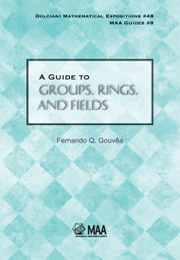A Guide to this Guide
Summary
In the first chapter I give a brief historical introduction. Its main role is to situate us in what I call the “modern” approach to algebra.
The second and third chapters are about notations, concepts, and words that I will be using throughout. Chapter 2 introduces the language of category theory, while chapter 3 surveys algebraic structures. I use categorical language only where I feel it is really helpful, so readers should feel free to skip chapter 2 and only refer back as needed. It is also possible to skip chapter 3, since most of the definitions introduced there will be repeated later. Some readers, however, have told me that reading chapter 3 gave them a helpful overview of the algebraic landscape, preparing them for the more detailed exploration to follow. One of my themes in that chapter is that ideas build on other ideas and structures get increasingly rich.
Chapters 4, 5, and 6 are the meat of the book. They address, respectively, groups, rings, and fields. Chapter 4 includes the standard results about groups and the basics of representation theory. Rings and modules are treated next, in Chapter 5; this is the longest chapter, since the world of rings and modules is full of variety. The final chapter deals with fields and skew fields, including Galois theory and the Brauer group. Each of these chapters includes more material than some readers will need or want, so I have tried to make it easy for readers to skip around.
Information
- Type
- Chapter
- Information
- A Guide to Groups, Rings, and Fields , pp. 1 - 2Publisher: Mathematical Association of AmericaPrint publication year: 2012
